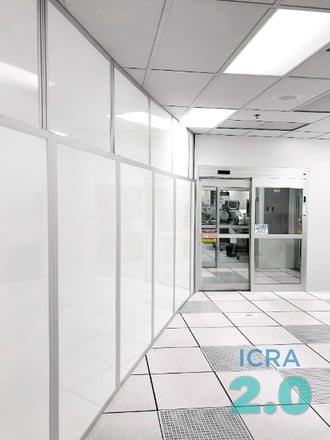
The next generation of the infection control risk assessment – dubbed ICRA 2.0 – was developed by ASHE, which convened a group of experts to review the original ICRA processes after several years in use. Although the updated precautions matrix is intended as a guide for healthcare construction and renovation projects, it’s a good idea to check your local and state regulations to see if a particular locality has elevated ICRA 2.0 into a requirement.
During STARC’s most recent webinar, ICRA 2.0: Recommendations for Improving Prevention Planning in Healthcare Construction, our expert panel explored what’s new and different. Following are some quick takeaways.
What Changed?
ICRA 2.0 includes more complete descriptions of the various categories in the matrix, providing greater clarity for users. For example, the previous ICRA matrix focused on construction. Now, there’s a routine maintenance class for the ICRA, and inclusion of a standard workflow (and potentially a standardized permit) for those processes.
For a more comprehensive overview of the specific updates, read this guest blog post by Dr. Janet Haas, CEO and Principal Consulting Epidemiologist at Innovative Infection Prevention. Also, be sure to check out Dr. Haas’s interactive follow-up post, 5 Cases Using ICRA 2.0: Test Your Understanding.
Raising Stakes for IP
Beyond the changes to the precautions matrix, it’s clear this ASHE-led effort has raised the stakes for infection preventionists. As Leon Young, Infection Prevention and Healthcare Construction Consultant, alluded to during the webinar, it’s almost as if ASHE wants the IP to be more involved with the ICRA process and mitigation strategies.
Young says he’s thrilled ASHE has taken the partnership with infection prevention and healthcare construction to the next level.
Containment and Isolation
As you might expect, any industry-wide push to improve infection control brings with it an opportunity to reconsider traditional approaches to the containment of dust, dangerous pathogens, and risks associated with fire and smoke.
At STARC, we focus on providing negative air spaces for healthcare construction containment or isolation. As Bruce Bickford, Vice President of Product Development, pointed out during the webinar, our LiteBarrier and RealWall panels and modules provide the highest level and reliability of any temporary containment system because they are specifically engineered to reduce or stop airflow across the wall.
These solutions also provide accessories for HEPA machine integration and pressure monitoring. The flexibility of our system makes creating anterooms, corridor walls and negative pressure rooms equally straightforward and fully compliant with ICRA standards. In addition, our non-combustible panels can be used as fire barriers when the area is fully sprinklered.
No doubt, risk assessments for infection control will continue to evolve, but this ASHE-led ICRA 2.0 effort marks an important step forward for healthcare facilities management.
To watch the uncut recording of our webinar, click here.
To access the ICRA 2.0 form and permit from ASHE’s website, click here.
Interested in More Information on STARC Systems?
